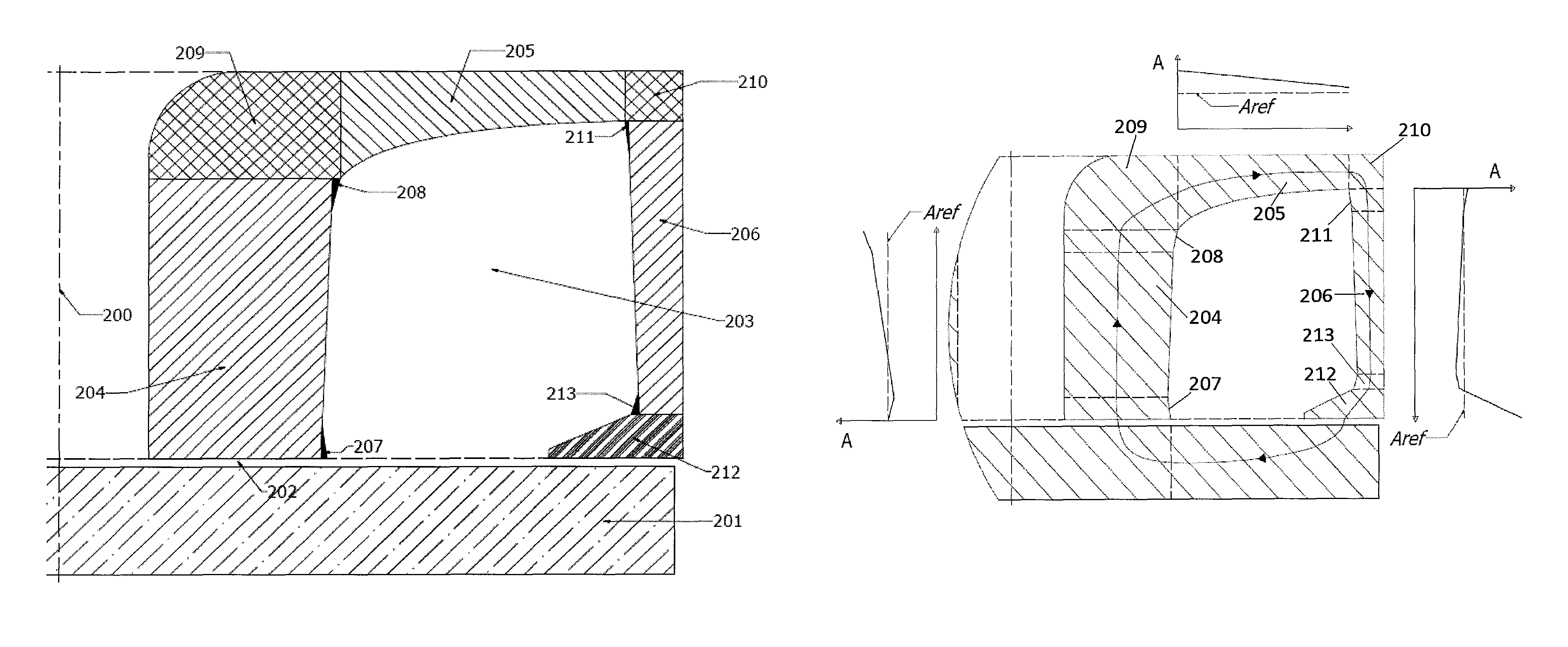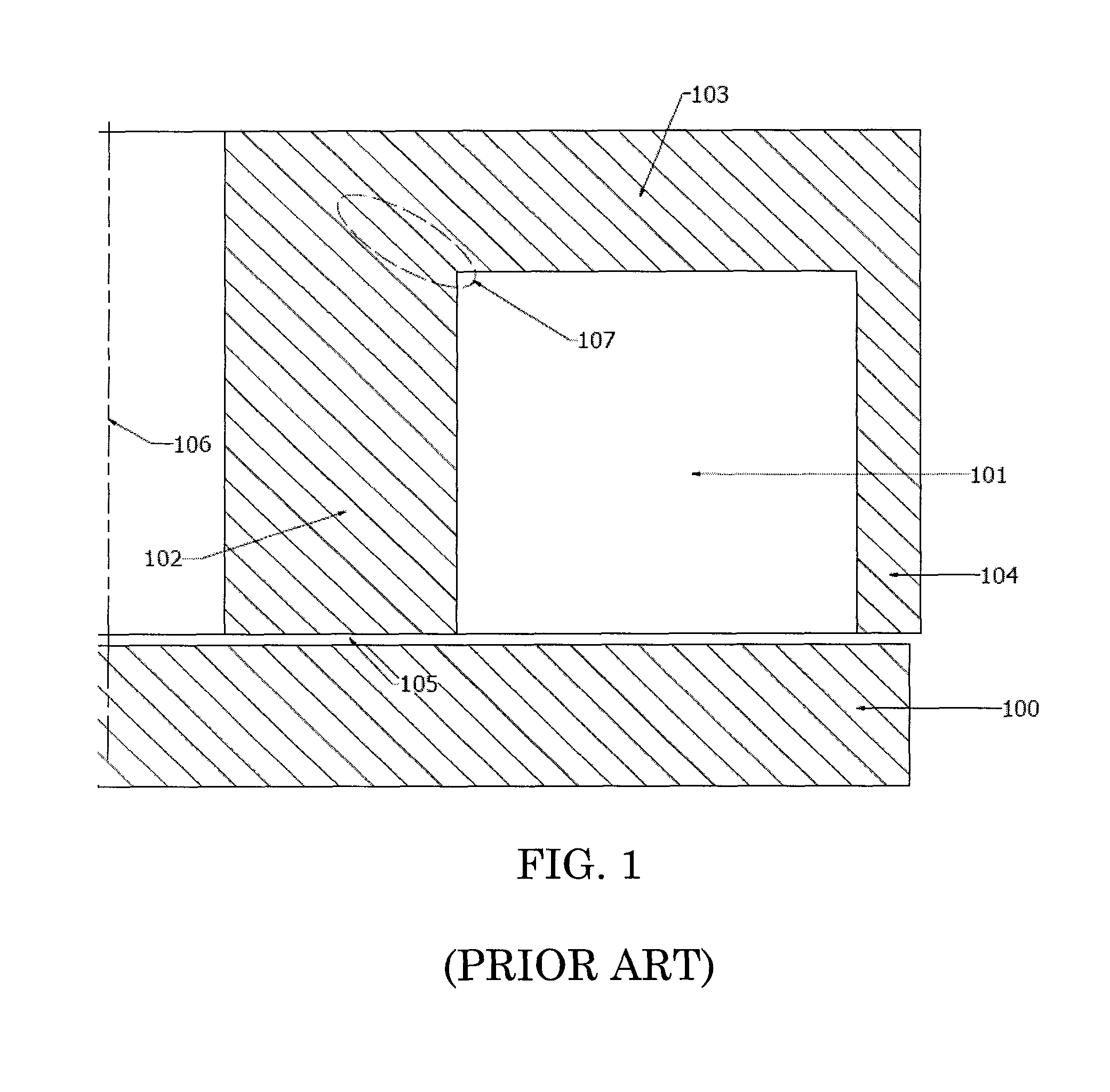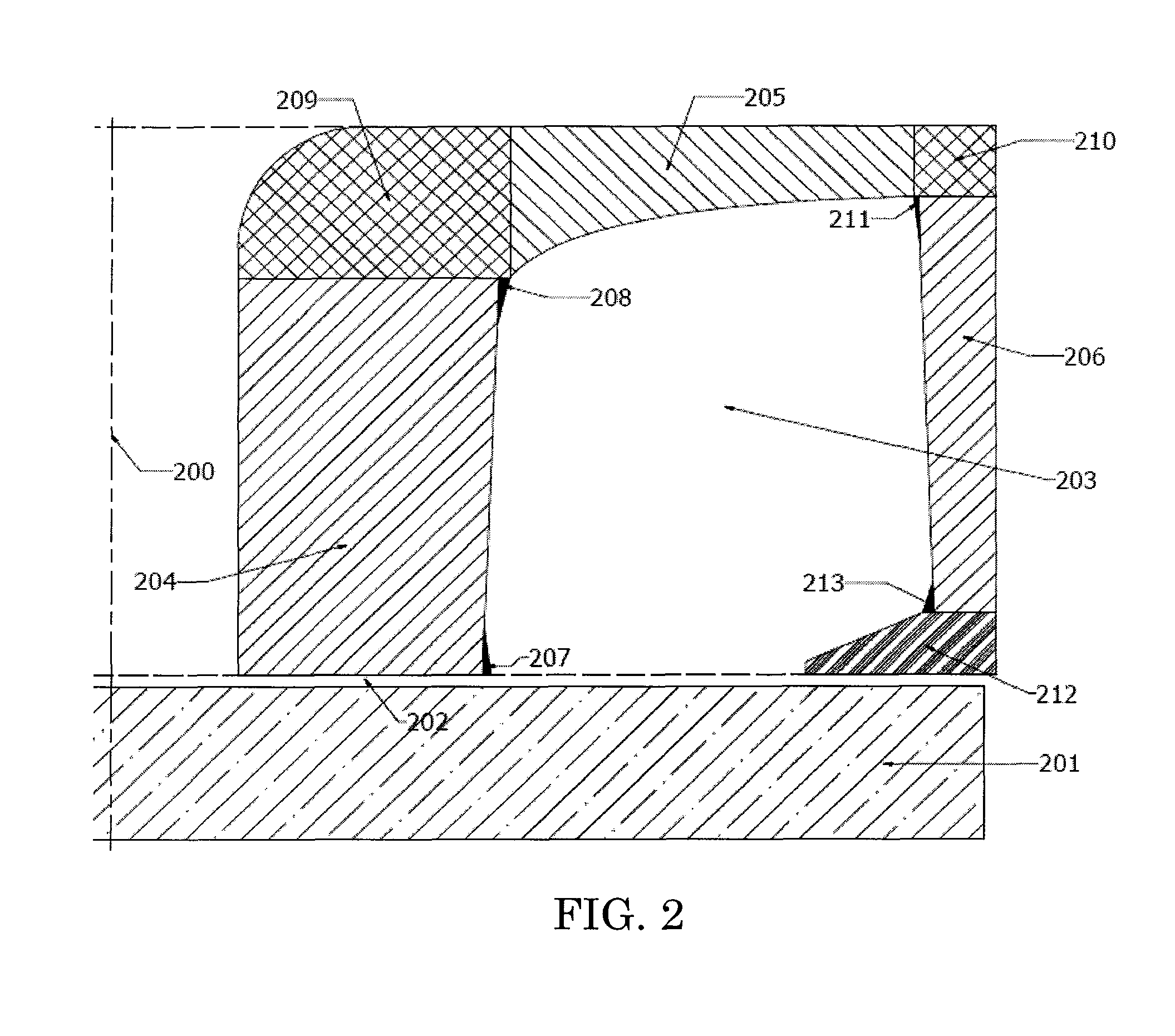High specific force capacity thrust magnetic bearing and method of making
a magnetic bearing and high specific force technology, applied in the direction of magnetic circuit rotating parts, magnetic circuit shape/form/construction, mechanical equipment, etc., can solve the problems of high rotational speed failure of disk material, insufficient volume, and inoptimal configuration described in prior art, so as to reduce the amount of time required
- Summary
- Abstract
- Description
- Claims
- Application Information
AI Technical Summary
Benefits of technology
Problems solved by technology
Method used
Image
Examples
Embodiment Construction
[0029]FIG. 2 shows a cross-sectional geometry that is a substantially improvement in efficiency over the prior art. In order to compare the conventional configuration in FIG. 1, the axis of revolution 200, thrust disk 201, air gap 202 in FIG. 2, and all exterior stator dimensions are the same as in FIG. 1. Unlike the prior art, however, the coil cavity 203 is not rectangular, but rather forms a loop that creates a highly variable cross-sectional area normal to the flux path. The stator still has three major regions as shown in FIG. 2, namely inner pole 204, back face 205, and outer pole 206. FIG. 3 shows how the cross-sectional area changes in these three regions, with area plotted versus distance and the area of the inner pole at the air gap labeled as Aref.
[0030]The flux path is shown in FIG. 3 as a closed loop with arrows indicating direction. Starting from the inner pole air gap and going clockwise, the cross-sectional area decreases from Aref along the gap face inner pole exten...
PUM
 Login to View More
Login to View More Abstract
Description
Claims
Application Information
 Login to View More
Login to View More - R&D
- Intellectual Property
- Life Sciences
- Materials
- Tech Scout
- Unparalleled Data Quality
- Higher Quality Content
- 60% Fewer Hallucinations
Browse by: Latest US Patents, China's latest patents, Technical Efficacy Thesaurus, Application Domain, Technology Topic, Popular Technical Reports.
© 2025 PatSnap. All rights reserved.Legal|Privacy policy|Modern Slavery Act Transparency Statement|Sitemap|About US| Contact US: help@patsnap.com



